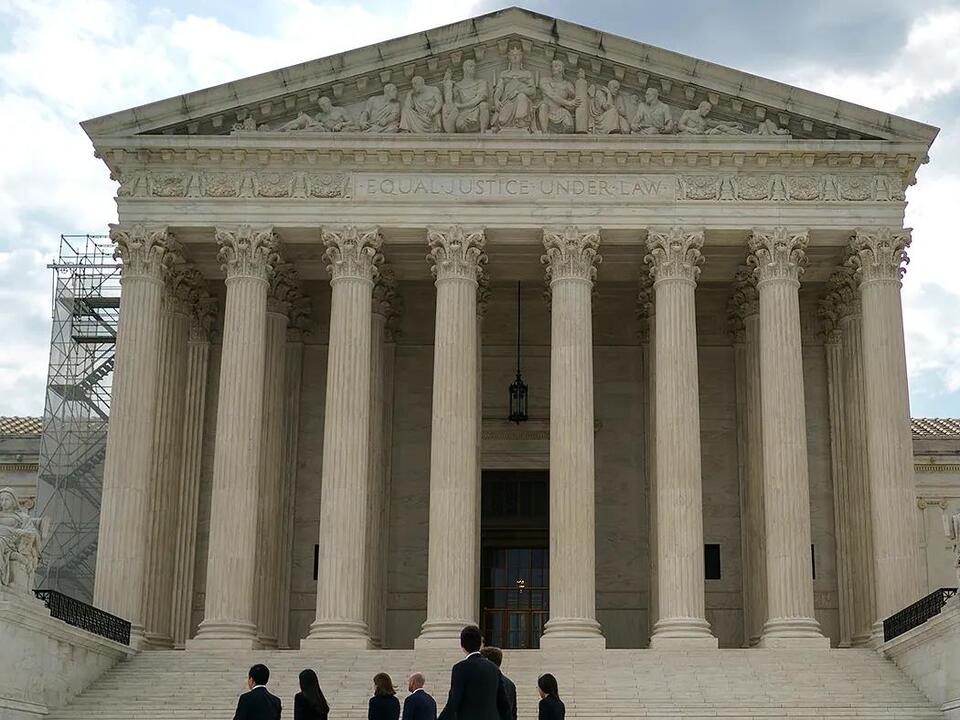Physical Address
304 North Cardinal St.
Dorchester Center, MA 02124
Physical Address
304 North Cardinal St.
Dorchester Center, MA 02124

President Biden has proposed a reform to the Supreme Court that is gaining traction: limiting justices to staggered terms of 18 years. This concept emerged from the National Constitution Center’s 2022 Constitution Drafting Project, which engaged scholars from various political backgrounds to explore areas of agreement on constitutional change.
Despite its appeal, the effectiveness of staggered 18-year terms in achieving the desired reforms is highly questionable. While such a structure would connect control of the Supreme Court more closely to the outcomes of presidential elections, it would likely reduce the Senate’s role in confirming nominees. It seems improbable that the Senate would agree to an amendment that curtails its power.
Proponents of this change suggest maintaining the Supreme Court at nine justices, each serving an 18-year term, with a vacancy created every two years. They posit three primary benefits of this reform.
First, the proposed term limits would decrease the discrepancy between a justice’s appointment and the current political landscape. This gap can be significant; for instance, Justice Clarence Thomas was nominated by President George H.W. Bush in 1991, and eight presidential elections have taken place since then. Under the proposed term limits, a maximum of four presidential elections would separate a sitting justice from the political climate at the time of their appointment.
Second, regular vacancies every two years would assure that winning the presidency results in two Supreme Court appointments. The 18-year limit implies a more direct correlation between electoral outcomes and the court’s decisions over time.
Third, it is argued that this predictability would reduce the intensity of judicial confirmation battles. Knowing that each election brings an opportunity for two new justices may foster a calmer atmosphere around nominations.
While these reasons appear compelling, there are crucial implications and potential downsides to contemplate.
The assumption that predictable vacancies would diminish divisiveness in appointments is not guaranteed. As Rick Larue noted, knowing exactly which two justices could be replaced by the next president might heighten election stakes, transferring hyper-partisanship and fierce political rhetoric from the confirmation arena to the electoral campaign itself. Other contentious political issues, such as redistricting and gerrymandering, remain polarizing despite the desire for predictability.
If the Supreme Court is so crucial that its vacancies spark intense debates, then reducing political tensions would require justices to temper their ambitions.
More critically, enforcing a two-year vacancy schedule would need a significant alteration or the elimination of Senate confirmation powers. In a divided government, the Senate can halt the confirmation of nominees indefinitely, as demonstrated with Merrick Garland’s nomination in 2016.
The constitutional amendment proposed by the Constitution Drafting Project attempted to tackle this issue by declaring that the Senate’s inaction for three months after receiving a nomination would imply consent. In essence, failure to act would equate to an automatic confirmation.
This approach, however, is unsatisfactory. A Senate vote to reject a nominee resets the clock, allowing a majority to prolong the process for many months. This could lead to a strategy shift from passive obstruction to explicit rejection, which might not soothe tensions around the confirmation process.
The most straightforward solution for establishing predictable two-year vacancies might be to abolish the Senate confirmation process entirely. The underlying logic of this reform is that winning a presidential election should reliably influence the composition of the Supreme Court, making the appointment of two justices a direct outcome of electoral success.
Could eliminating Senate confirmation be detrimental?
The rationale for Senate confirmation was originally to prevent unfit or corrupt officials from taking office and to ensure presidential appointments are responsible. While the process has sometimes fulfilled this role—such as in the cases of Harriet Miers and Abe Fortas—it has more often served to perpetuate mediocrity on the bench.
Against the minimal advantages gained from this gatekeeping function lies the spectacle that the confirmation process has devolved into. Since 1980, the average time from nomination to confirmation has extended to 80 days, with lengthy dramas becoming standard. Among the confirmed justices in that time frame, only Amy Coney Barrett’s nomination took less than a month, a fact that was controversial at the time.
Historically, the confirmation process was much shorter. The median time from nomination to confirmation prior to 1980 was just 17 days, with many nominees confirmed in under a month, some even within just one day.
The chaos surrounding Supreme Court confirmations can be attributed to changes in how the Senate approaches them. Public confirmation hearings have morphed into exhaustive evaluations, a stark departure from the historical precedent where nominees were rarely subjected to public vetting.
Considering these complexities, perhaps the idea of weakening or eliminating Senate confirmation shouldn’t be dismissed. Advocates of term limits must acknowledge this change as a necessary step toward aligning the court more closely with electoral results.
Source: Nexstar Media, Inc.



